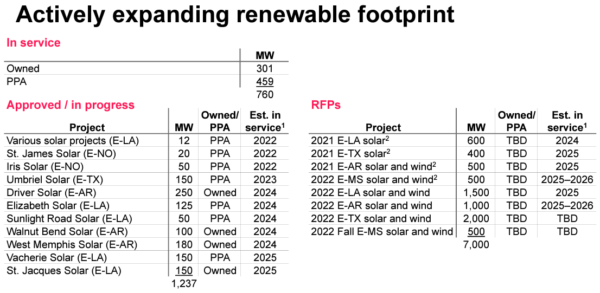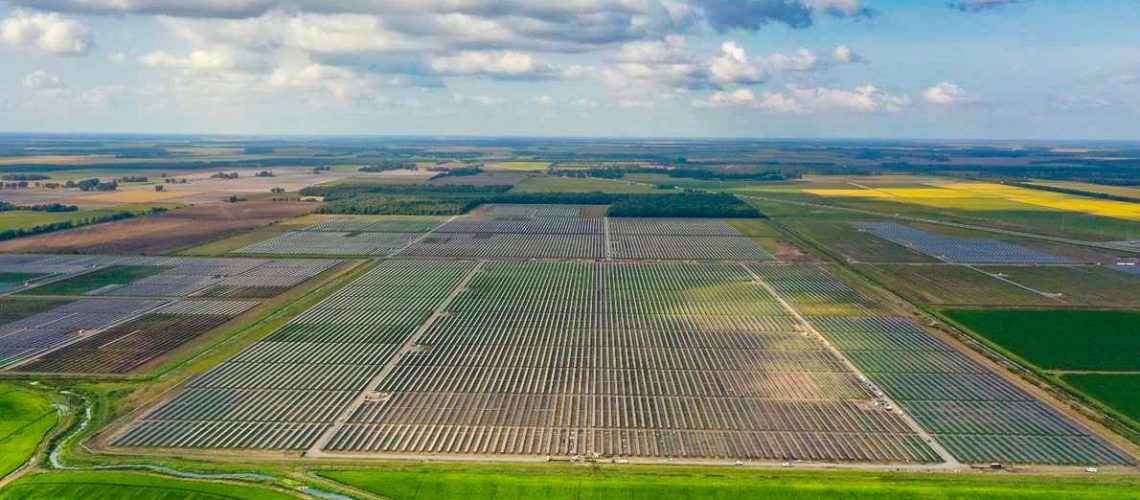The pv magazine USA tour of solar incentives last stop was Oklahoma, and now moves to Arkansas, which is called the “Natural State”. It is also a natural gas state. It produces large amounts of natural gas as a primary fuel used for energy production, with coal and nuclear power following closely behind.
Currently Arkansas has a small but increasing amount of solar power generating capacity, which accounted for about 10% of the state’s renewable electricity generation in 2021; an 18x increase from 2016.
According to the Solar Energy Industries Association (SEIA), in mid-2022 the state still ranked 30th in the U.S. for solar generating capacity overall with 587.9 MW of total solar capacity, with 177.1 MW of project installations in 2021.
But according to the Midcontinent System Operator interconnection queue filing, Arkansas represents 1.65 GW of the MISO region’s 5.77 GW of new solar and energy storage project development, a large buildout proposition for a state which in recent years faired in the bottom two dozen states for solar as represented by SEIA.
According to the Southern Renewable Energy Association, a clean energy advocacy group, more than $28 billion in investment opportunities lie in the Arkansas solar market out of the group’s forecast of 25.3 GW of long-term solar development opportunities.
Arkansas still does not have a Renewable Energy Portfolio standard as of late 2022, according to the EIA. In 2010, the PSC created a Sustainable Energy Resources (SER) Action Guide, which required investor-owned utilities to reduce electric sales and natural gas sales compared to a 2010 baseline.
Net metering
Despite no statewide RPS, Arkansas’ PSC does allow net metering, enabling households with small, customer-sited solar panels, wind turbines, or other renewable installations no larger than 25 kW to receive credits from utilities to sell excess electricity back to the grid.
Businesses with renewable power systems up to 300 kW in capacity are also eligible to receive the same incentives for net metering as residential customers.
In May 2022, the Arkansas Court of Appeals ruled in favor of solar power, upholding the rate structure for net metering, which previously had stated that solar customers would receive the full retail rate for excess energy they send to the grid. The Appeals court ruling ended a tumultuous battle among the PSC, solar companies including Scenic Hill Solar, and rural electric cooperatives including the Arkansas Electric Cooperative Corp. and Petit Jean Electric Cooperative of Clinton.
Entergy for its part had requested a reduction in the current $0.10 cents/kilowatt-hour net metering rate. But the Arkansas PSC voted on June 1 to retain the current 1-to-1 full retail credit for net excess generation, for both residential and commercial customers.
In January 2022, the state began two programs to expand EV charging infrastructure. One program provides rebates to government and non-profit groups that install Level 2 charging stations and the second program offers funding assistance for three DC fast charging stations.
Entergy turning a green page
Entergy Arkansas operates a service territory that encompasses more than 80% of the state’s land area, while a western band of the state is divided among rural electric cooperatives, AEP SWEPCO and Oklahoma Gas & Electric, with 12 communities that also provide their own electricity.
Before this year, many argued the state appeared to be moving slowly to adopt widespread solar next to its coveted gas and coal-fired power plants. However, utility Entergy Arkansas revised its 2021 IRP mid-year.
On June 30, 2022, the out-of-state investor-owned utility filed a request for proposal for 1 GW of solar and wind generation resources, to enter operations between May 2025 and December 2026. Then Entergy held another climate change meeting and brought its long-term renewables proposal to 4 GW of new capacity by 2030.
At the 2022 UN Climate Change Conference, an MOU between Entergy Arkansas and the U.S. General Services Administration was announced focused on achieving net zero energy resources in the company’s service territory.
Entergy Arkansas, the state’s largest utility company owned by New Orleans-based Entergy, filed a 2021 integrated resource plan, which from 2023 to 2042 will see the Arkansas utility company shift away from natural gas combined cycle gas turbines and other baseload generation in favor of more renewable energy resources coming online such as its first three solar projects.
Prior to revising its 2021 IRP this year with net zero goals, the bulk of the utility’s energy transition was fueled by natural gas combined cycle gas turbine (CCGT) facilities, with less than a few hundred MW of anticipated solar capacity. But following the utility’s 2022 shift, Entergy Arkansas’ fuel mix shifted to include more than 4 GW of new solar, energy storage and some wind developments.
It’s worth noting that Entergy Arkansas has the highest capital spend plan of all Entergy’s utilities for new generation sources in the coming years, with Arkansas as the only state to see $1 billion devoted to new generation investments in 2024 alone, up from $455 million in 2023, reflecting the shift from old baseload generation to new renewables resources.
Two remaining Arkansas coal-fired generating plants, White Bluff (1.8 GW) and Independence (1.7 GW), may be shut down by 2026 timeframe rather than 2028 as originally planned, said the SREA, well ahead of schedule on 2030 net zero plans. The curtain call for the coal resources provides a large enough displacement for new solar, storage and wind developments to fill.

Landmark solar installations
Arkansas’ two largest solar farms each have 100 MW of generating capacity and came online over the last two years.
The Chicot Solar Farm in Lake Village, Arkansas came online in September 2020. The project has 350,000 solar panels spread over 825 acres and supplies enough power for 18,000 homes. The project was developed by NextEra Energy Resources and is the second of four solar projects be procured for Entergy Arkansas under a 20-year power purchase agreement.
Entergy’s third solar project, Searcy Solar farm, is located northeast of Little Rock and came online in January 2022. Searcy marks the first solar plus energy storage deployment in the state with storage capacity of 10 MW (30 MWh) of capacity and was installed by NextEra.
Entergy’s first solar project to come online was Stuttgart Solar, an 81 MW facility located in Arkansas County about 55 miles east of Little Rock. The project was activated in 2018 and provides $8 million in additional tax revenue to the county.
Future projects in the state are aiming bigger and bolder. Driver Solar, a 250 MW solar facility being developed by Lightsource bp, is expected to enter commercial scale operations in late 2024.
Up next
The next stop on the pv magazine USA tour of solar incentives will be Louisiana.



